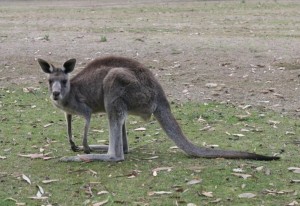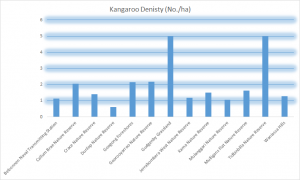Science of Kangaroo Culls

Source: Wikimedia Commons, User Sklmsta
It was announced recently that the ACT Government’s controversial kangaroo culling plans will see an increase in the following years, with a plan to kill 5000 kangaroos over the next two years to combat their environmental impact. This is a larger amount than in previous years, as last year’s cull targeted 1500 kangaroos.
There has been significant backlash from concerned parties, citing issues with the accuracy of the government’s population estimates. A report released by the ACT Environment and Planning Directorate shows that population data is calculated by first dividing land up in to Kangaroo Management Units (KMUs). These units are areas where it is difficult for kangaroos to stray from, due to high speed roadways and physical barriers.
With the validity of government estimates being questioned, it is strange that the data that is being used to back up the need for a cull primarily concerns itself with population density, rather than emphasising hard figures to ease peoples worries. This may be because population density is the catalyst for environmental concern, rather than sheer population figures.
The government outlines its line of action in their Kangaroo Management Plan (KMP), released in 2010. It has not been updated since then, and finding newer figures is a feat in itself. When questioned about the changing nature of the kangaroo population and perhaps a need for reevaluation, a senior government ecologist could not recall how he had reached certain conclusions in the KMP.
For the ACT region, there is data available for 13 KMUs. However, this data varies in many ways. Across all data, there are four different counting methods, five different organisations that conducted counts, and estimates were reached as long ago as 2006 in some cases. Some sites have many counts conducted, while others only received a single count before an estimate was reached.
To determine the ideal population density, it has been outlined that there should be one kangaroo per hectare in grassland, with that figure decreasing depending on the state of the area.
Here are the most recent publicly accessible figures, which we can compare to this target.

Based on this data, it is immediately apparent that the culling of kangaroos may be a viable decision to best maintain the local environment in some areas. However, without access to the most recent data, and obvious holes present in the data that is available, people are right to be concerned about the alarmingly high figures of kangaroos being culled in the near future.


Be the first to comment!